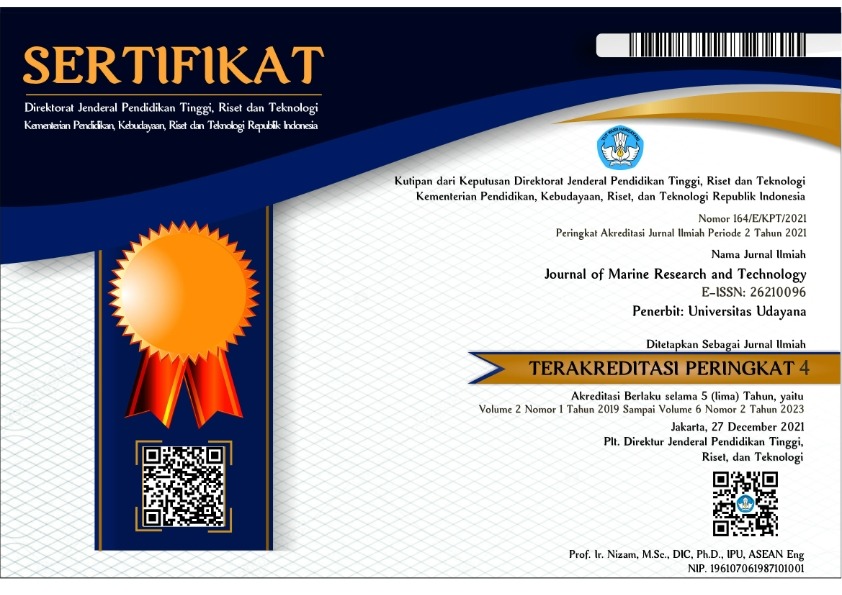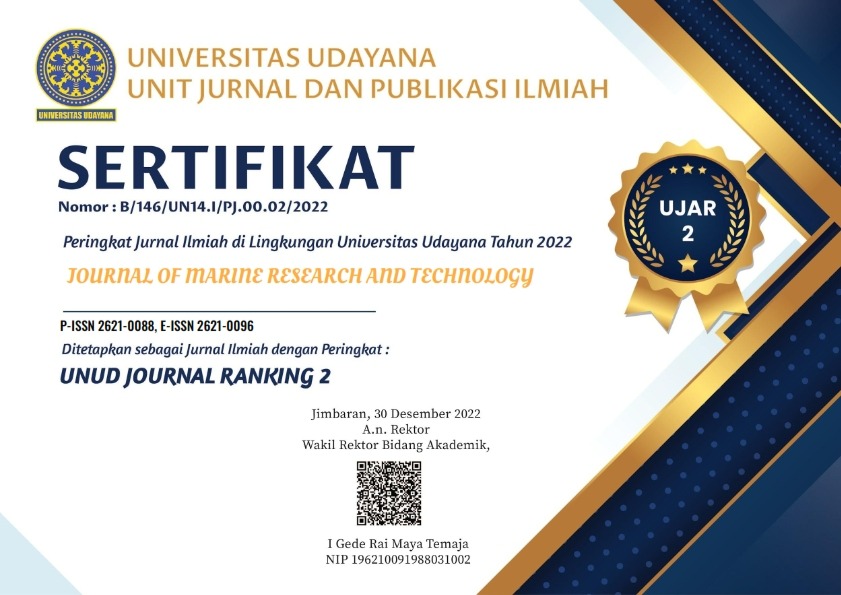Uji Akurasi Beberapa Indeks Vegetasi dalam Mengestimasi Kerapatan Hutan Mangrove dengan Citra Sentinel-2A di Taman Nasional Bali Barat
Canopy; hemispherical photography; vegetation index; mangrove density; remote sensing
Abstract
Vegetation Indices is one of the remote sensing parameters that can be used to estimate the mangrove forest density. The purpose of this study is to determine the vegetation index with the best accuracy to estimate the condition of mangrove density, as well as determine the spatial distribution of mangrove density in the TNBB area. This study uses Sentinel-2A satellite imagery data and five different vegetation indices, namely NDVI, NNIR, EVI, mRE-SR, and vegetation index developed in this study. The method of determining samples in the field uses stratified random and proportional sampling. Data collection of canopy density used hemispherical photography method, which is taking vertical photos with a 180o angle of view using a camera with a Fish Eye or Wide lens. Data analysis used in this study is regression analysis, coefficient of determination test, model validation test, and paired t test. From statistical tests conducted on several vegetation indices, the mRE-SR vegetation index value shows the best results on all the accuracy parameters tested. The R2 value was generated by the mRE-SR vegetation index from the relationship between mangrove density results from field measurements with the vegetation index value and the estimated density results shows that the highest values, namely 0.909 and 0.935. These results show that the mRE-SR vegetation index is the best vegetation index in explaining the variation of mangrove density in the field. The mRE-SR vegetation index also has the lowest deviation of the estimated value, with the resulting SE values in the two linear relationships of 1,592 and 0,999. In addition, the mRE-SR vegetation index has a P (T <= t) two-tail value greater than the significance level (0.05), the results means that two values of the tested variables are not significant different. The calculation results show that the total area of mangroves in TNBB is 409.21 ha. From the percentage of density obtained, the mangrove density class was only distributed in the medium and solid density classes.
Downloads
Copyright Notice
The copyright to this article is transferred to Journal of Marine Research and Technology (JMRT). The copyright transfer covers the exclusive right and license to reproduce, publish, distribute and archive the article in all forms and media of expression now known or developed in the future, including reprints, translations, photographic reproductions, microform, electronic form (offline, online) or any other reproductions of similar nature.






